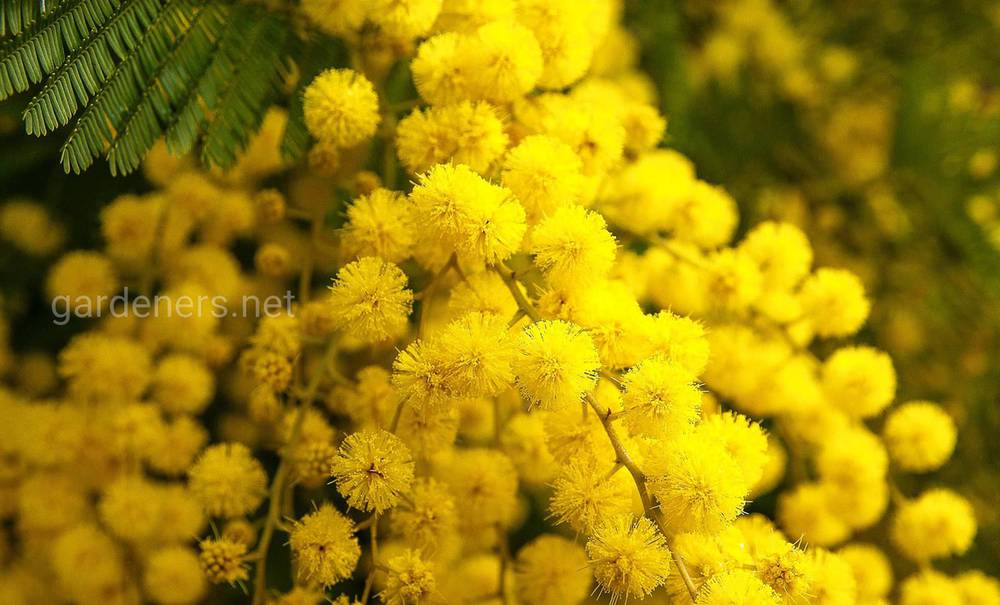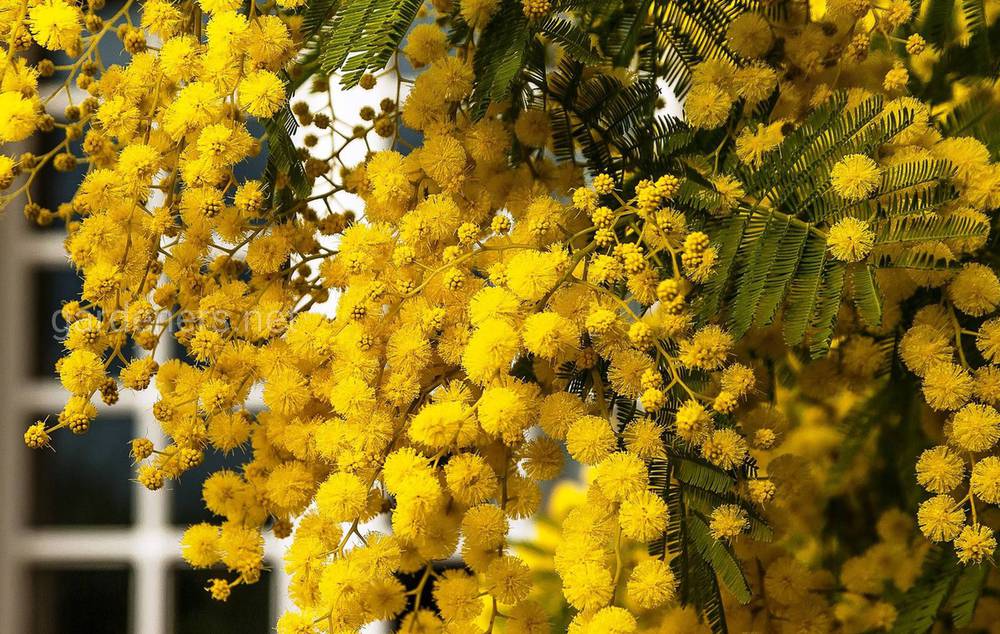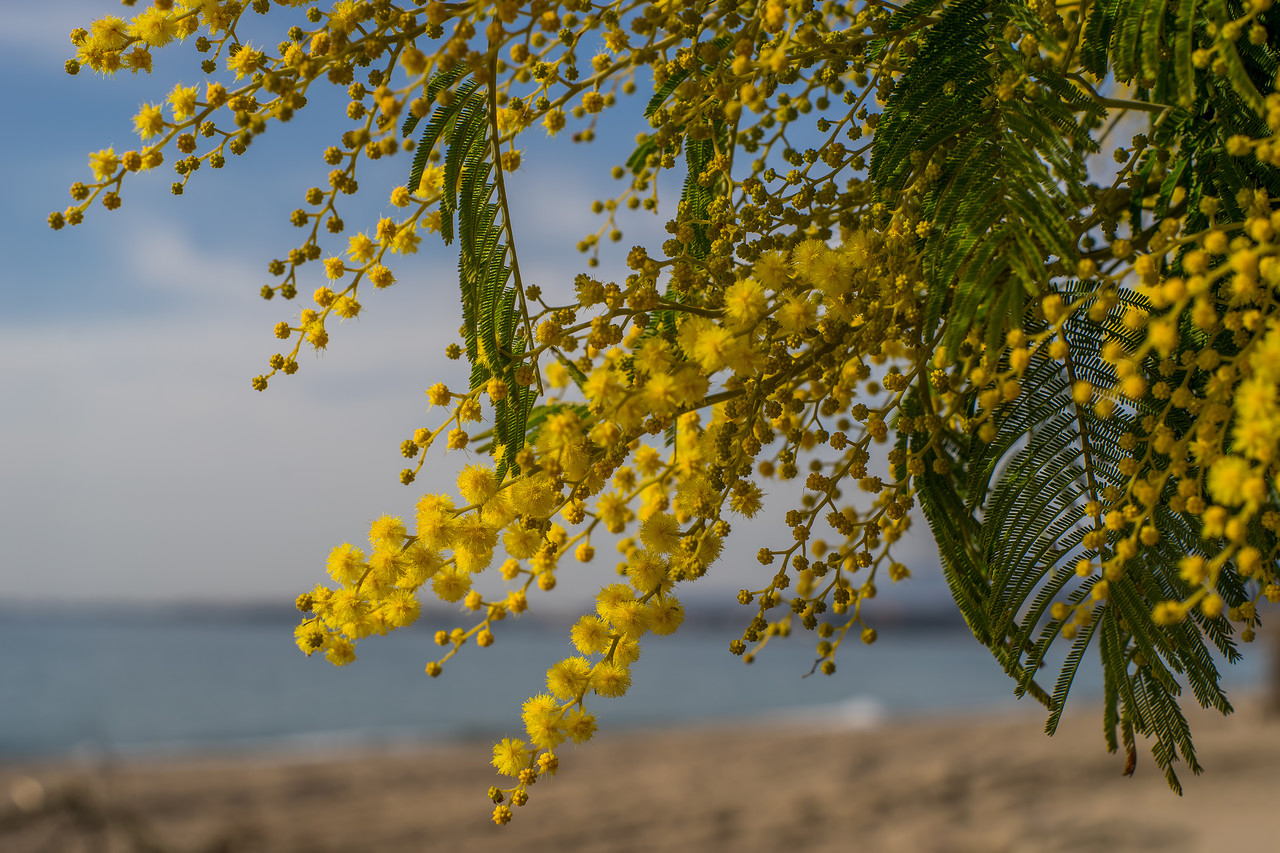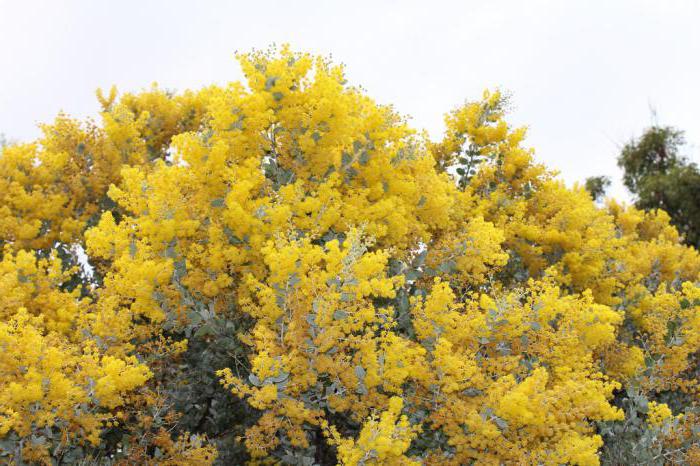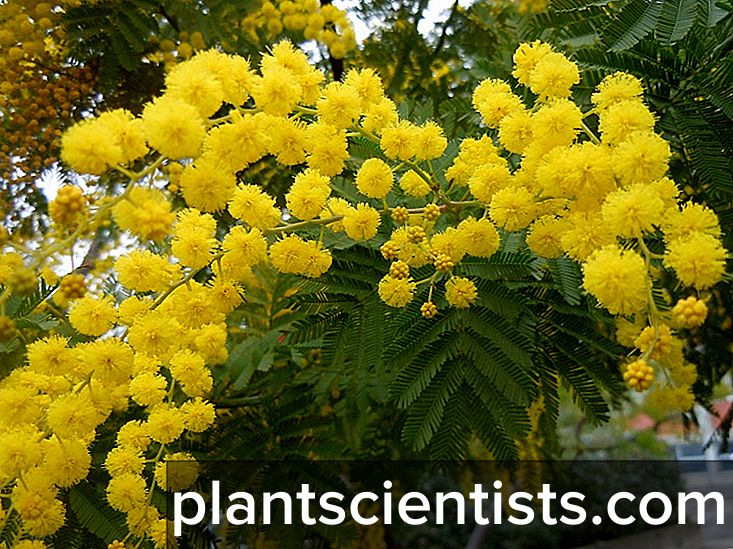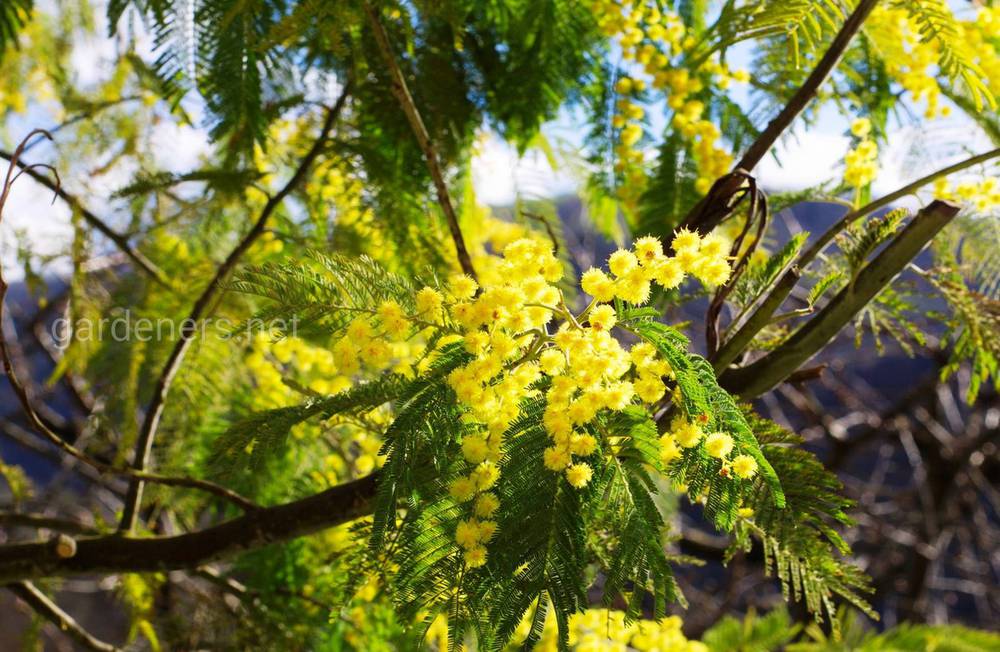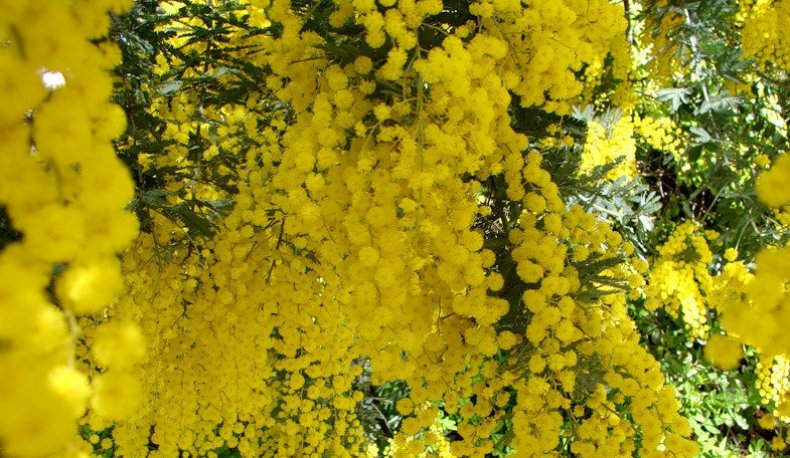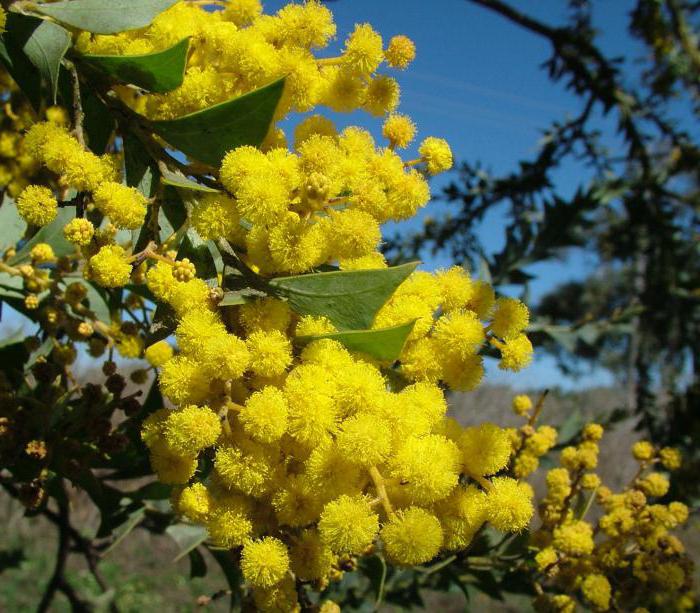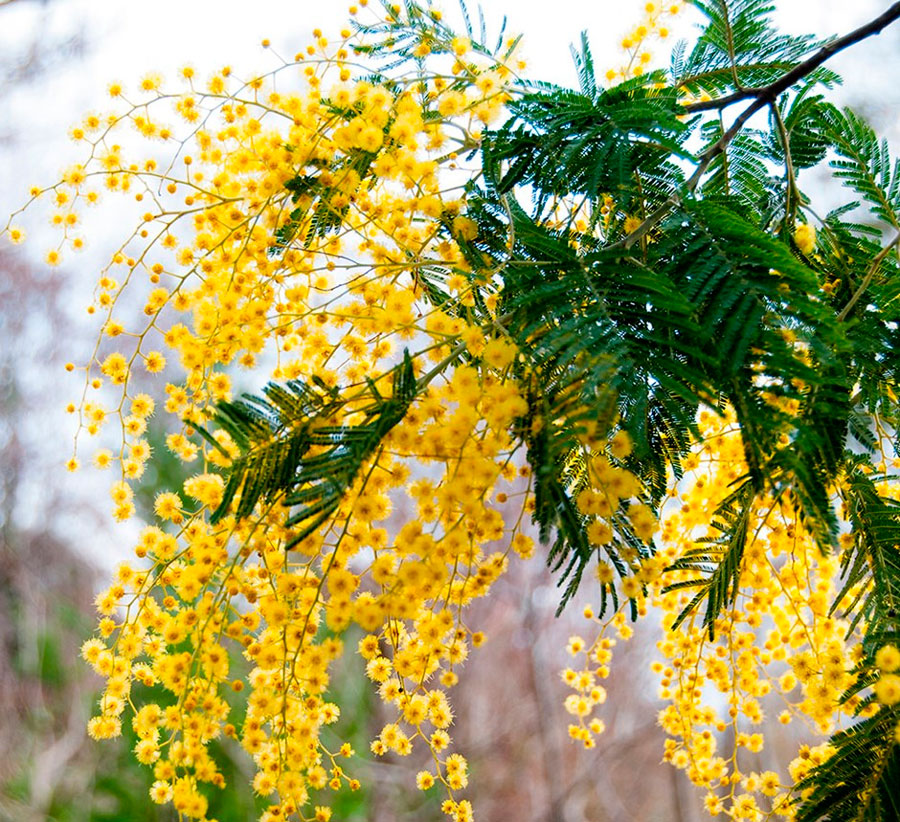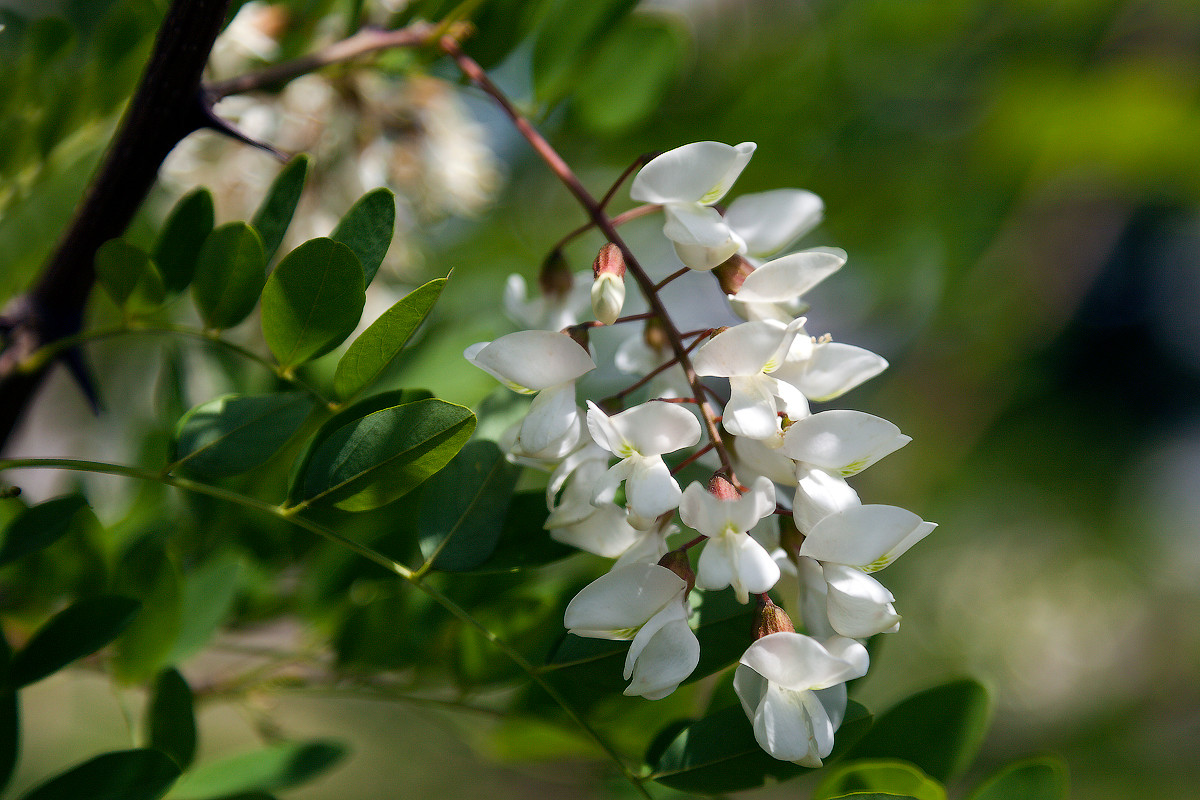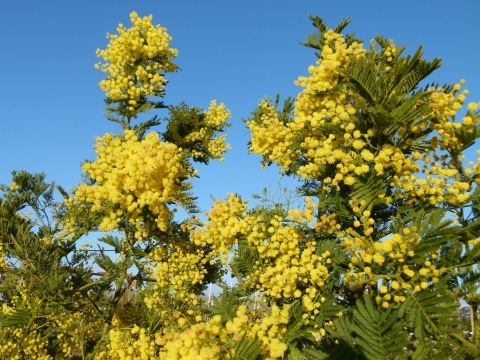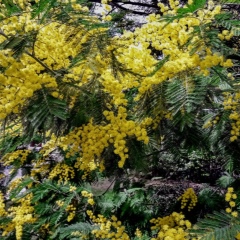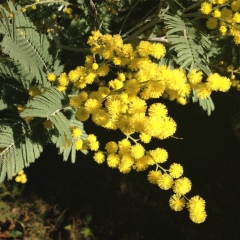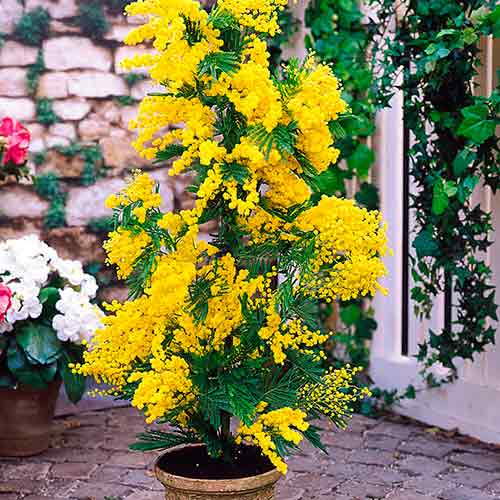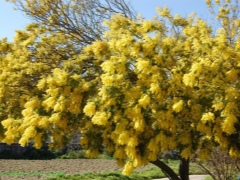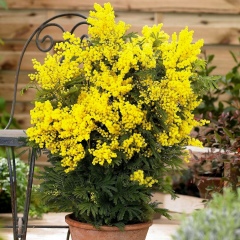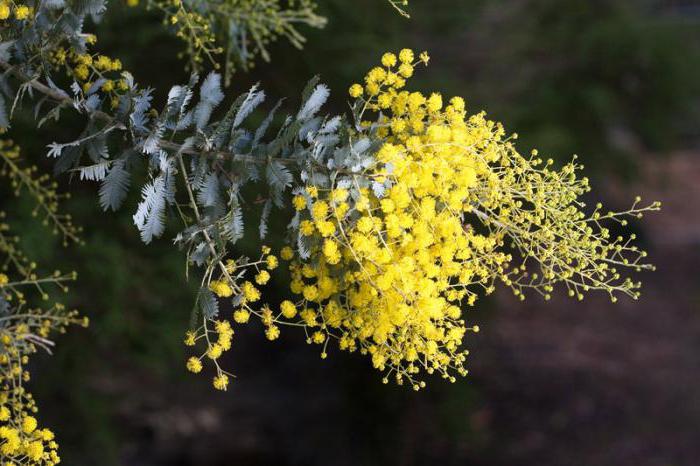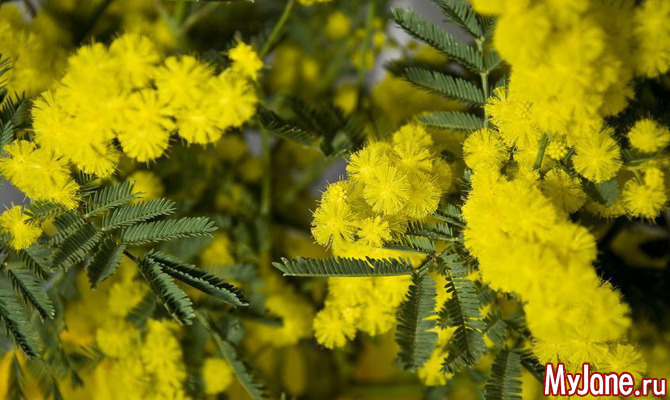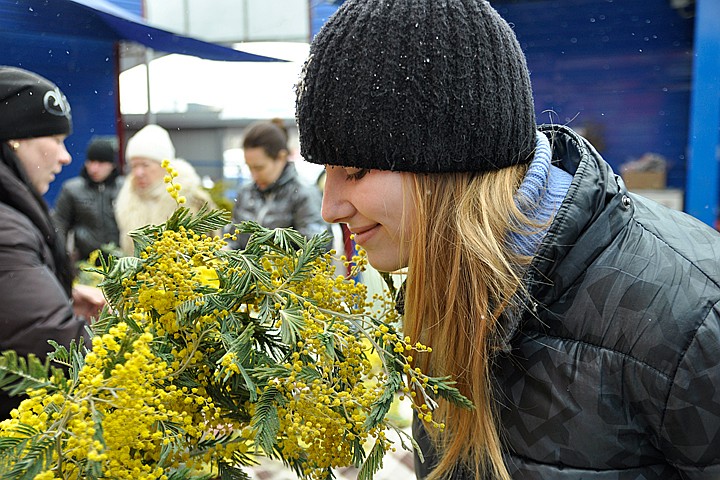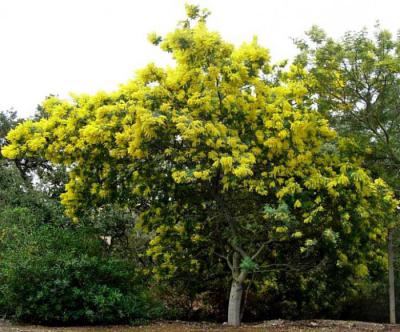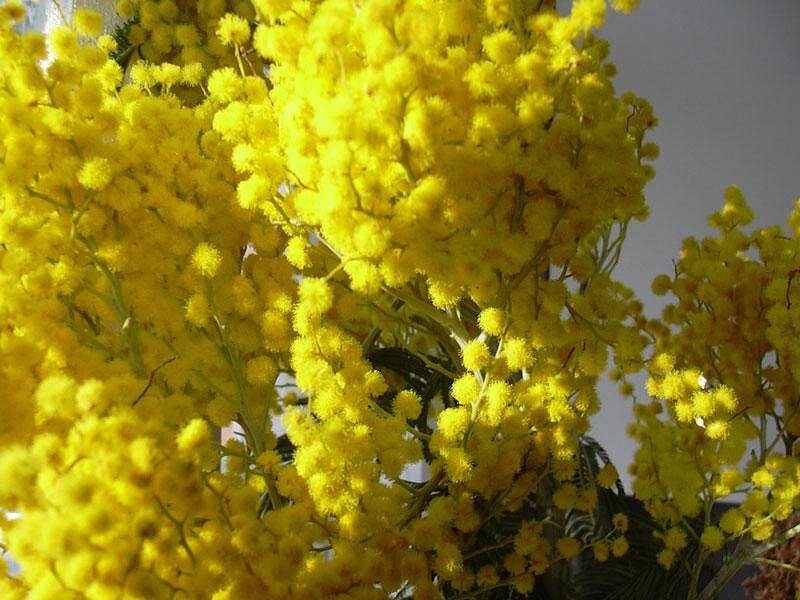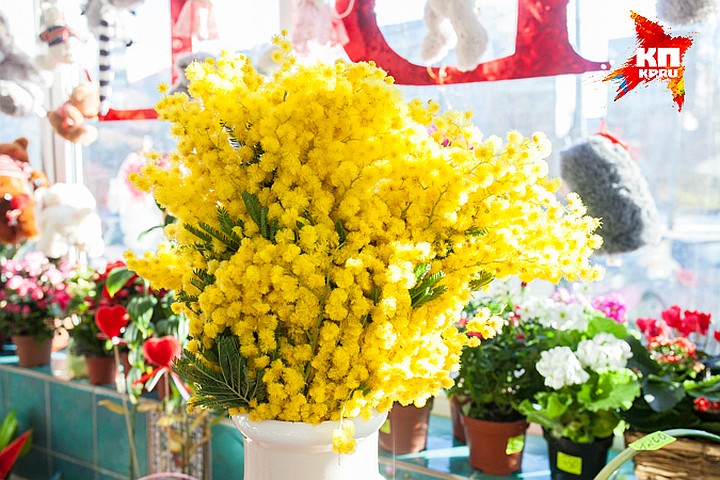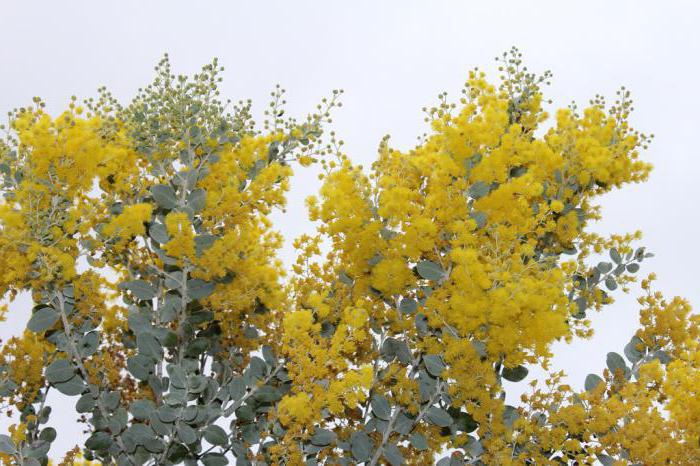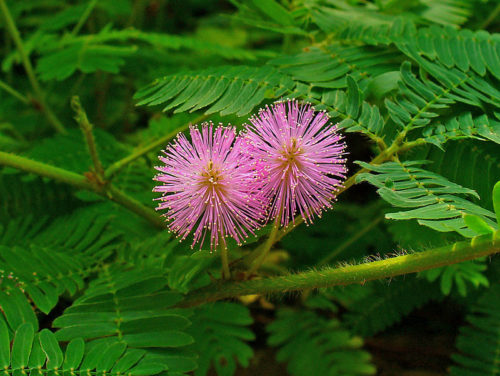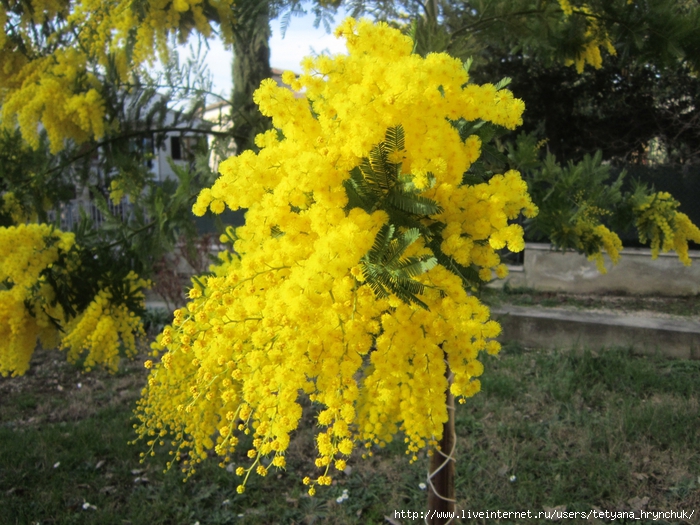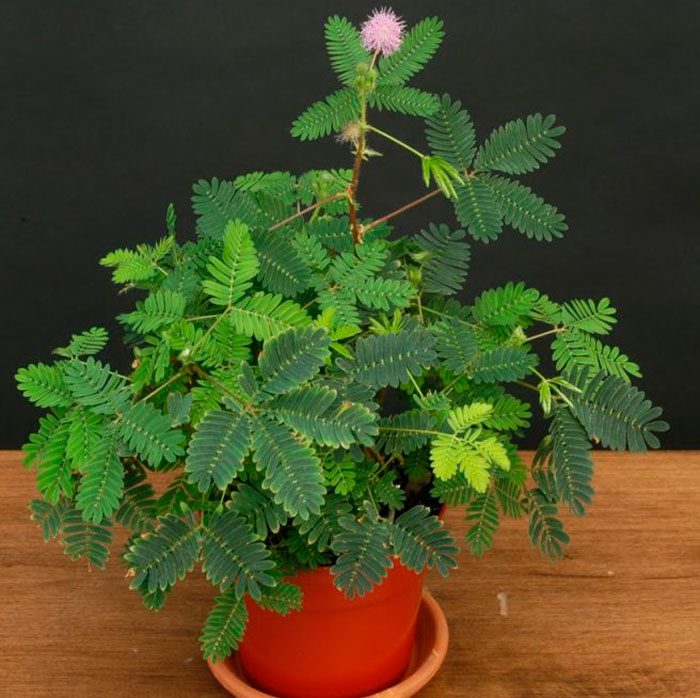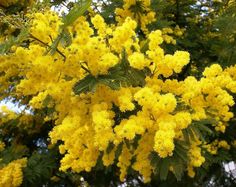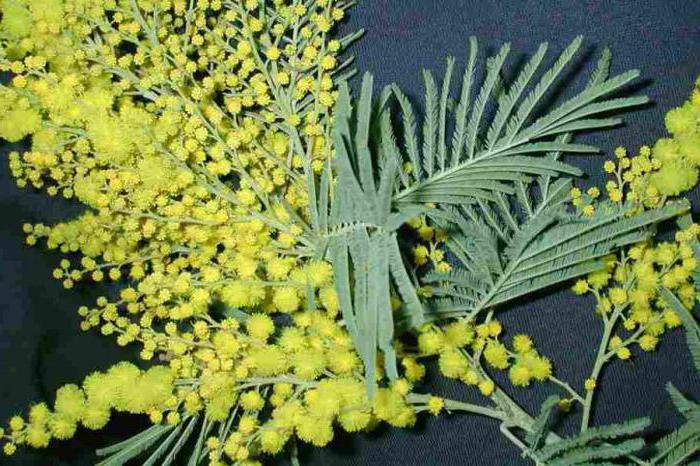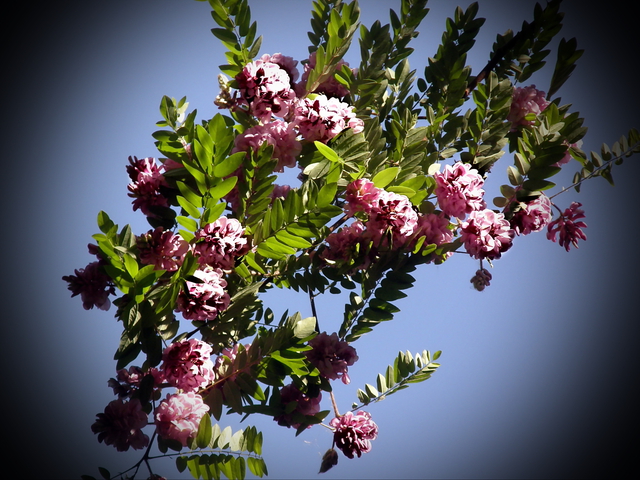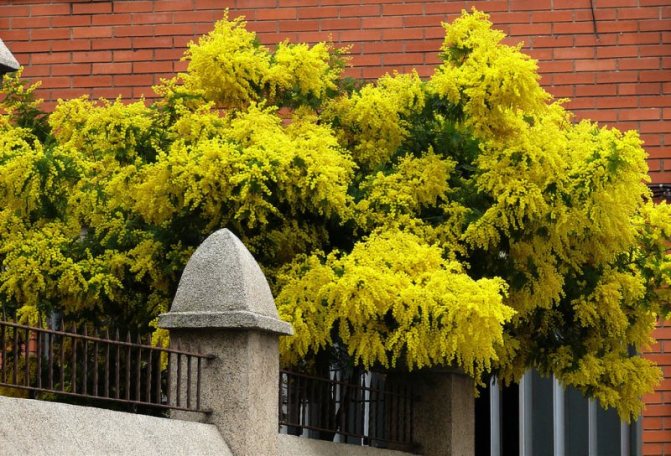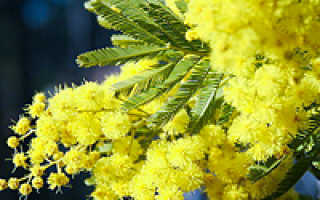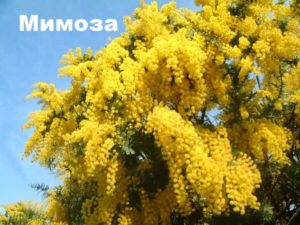Stereotypes and ... what's in between
However, not all plants, established in the minds of contemporaries as acacia, are such. On the territory of our country, in different climatic latitudes, grow:
- white acacia, which is more correctly called robinia, belonging to the legume family;
- yellow acacia, according to the flora of the Russian Federation classifier is listed as "caragana", kinship with robinia gives the popular name - "pea tree";
- silver acacia, which is the undisputed representative of the acacia genus; however, it is popularly known under the name "mimosa";
- Lankaran acacia (albitsia) - a native of the tropical forests of the African continent and Southeast Asia.
Robinia has the greatest decorative effect of inflorescences: the flower itself is larger, and loose inflorescences are more significant, and varietal characteristics allow differences in the color of flowers: from chaste white to different shades of pink.
Light-loving robinia, although they appear more and more often in the plantings of the Middle Lane, due to their low winter hardiness, are not ready to move to the north of the European part of Russia, like a caragan.
An exotic decoration of the coastal cities of the Crimea and the Caucasus is the flowering tree of albicia. Well, and a guest from the southern hemisphere - silver acacia, does not leave the Black Sea coast of the Caucasus at all, where it has been cultivated since the middle of the 19th century.
All these plants, differing in size and shape, flower characteristics and flowering periods, serve mainly for decorative and protective purposes:
- as planting along streets and roads in the forest belt;
- as green fences in the design of park paths;
- as group or solo elements of landscape design;
- like flowers to be cut into a bouquet.
The growing region largely determines the flowering time of these plants: there are robinia varieties that have several flowering periods per season and are decorated with lush inflorescences almost all summer. And wild-growing silver acacia goes through a flowering phase from January to April, so its yellow fluffy flowers delight women just on the day of their International Holiday. The end of the flowering period is determined by the timing of fruit formation:
- in white acacia, they ripen by November;
- in the yellow (caragana) - by the middle of summer;
- in silver - a pod with separately packed seeds appears by the beginning of autumn (August-September);
- in Lankaran, beans ripen only by November.
Interesting: In the center of Paris, under the walls of Notre Dame, among the concrete props, a 400-year-old robinia still blooms, grown from those seeds that were brought back from the New World.
In a flower - a fantasy of nature
Crown formation
All representatives of the legume family grow very quickly, and silver acacia is no exception. Growing and caring, especially high-quality ones, give tangible results: during the spring-summer period, it gives a significant increase. To avoid thickening and giving a beautiful shape to the crown, pruning of the plant is necessary. I must say that acacia tolerates this procedure well. The thickening of the crown is extremely harmful. The sun's rays do not penetrate into the overgrown areas of the crown, the flowering on them is noticeably reduced. At the same time, the risk of the occurrence of various pathologies increases.
Therefore, after flowering, the plant is examined, the branches that are weak and growing inside the crown are cut out. Forming the required volume, the shoots are shortened, thereby increasing the decorative effect of the culture, at the same time sanitizing it.
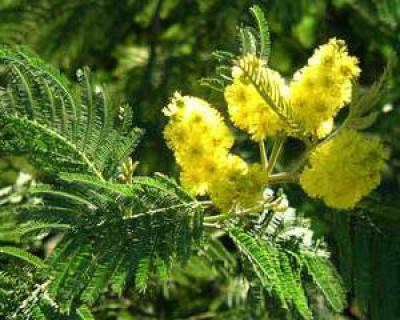
A decorative and flowering culture does not give many worries compared to the joy that silver acacia fills your home with. Growing it does not involve a lot of time and effort, but it gives you great pleasure.
A variety of varieties of mimosa
Varieties of this plant quite a lot, but not in Russia.In our regions, you can find the silver acacia, which is called mimosa.
- The silver acacia is distinguished by its delicate fern-like leaves. Coloring is possible from greenish to blue with a silvery shade. The color of the mimosa flower is yellow, spherical in shape. Flowering does not last long, begins at the end of winter and ends in spring.
- Shy mimosa is the variety that is considered real. She comes from Brazil, grows no more than a meter in height, and belongs to annuals. The flowers of this variety are pink and they appear in the summer. This variety can be successfully grown both at home and outdoors.
As an indoor flower, you can grow two more varieties of mimosa:
- Lazy mimosa is very low, only 50 cm, has straight and branched stems. She is sensitive to any touch. This mimosa blooms with white fluffy balls.
- Rough mimosa is a rare guest in the Russian open spaces; it grows in the tropical climate of South America. The height of the shrub in the wild is possible up to 20 m. The flowers are large, white and fluffy.
Diseases and pests of mimosa
Even if all the growing conditions for the plant are created, some difficulties may appear:
- folded leaves for no reason can talk about dirty indoor air;
- yellowing of the foliage, and even more so its fall, indicates a lack of moisture in the air or lack of watering;
- if the soil is very waterlogged or the room is cold enough, the leaves will also look sluggish;
- mimosa shoots are strongly stretched with a lack of lighting, if the plant grows in the shade, it needs additional light;
- constantly cold air below +18 degrees does not allow mimosa to bloom.
The plant can be affected by some pests, especially if it grows in the open field.
The apple aphid slows down the growth of mimosa and reshapes the foliage. You can get rid of insects by spraying with a general-purpose insecticide.
If a mealybug appears on the plant, you need to take alcohol and wipe all parts of the bush, then apply an anti-coccid agent.
Outwardly, mimosa looks very delicate and beautiful. Touching its leaves leads to their temporary wilting, this process is quite interesting to watch. It is not possible to create optimal conditions for growing this plant in all regions of Russia, but if it succeeds, mimosa will delight with funny flowering every year.
Reproduction of mimosa bashful seeds
Mimosa bashful Mimosa Pudica reproduces very well in indoor conditions by seeds.
Bashful mimosa is a tropical plant that is grown indoors as an annual, and is cultivated only as a fun plant.
Erect stems can reach 70 cm in height, and the flowers appearing at the ends of the shoots are 2 cm in diameter and have a mauve color. Usually, mimosa blooms are observed in the summer, but mine is not going to bloom yet.
Mimosa seeds can be purchased in sachets. They are slightly flattened peas, in a glossy dark brown or black shell-shell. It is possible to sow bashful mimosa seeds from the end of February to the end of April, it is grown in seedlings. Any loose soil mixture is suitable for sowing, and for successful germination of seedlings, a temperature of at least 20, or even 26 degrees is required.
Under such favorable conditions, seedlings will appear quite quickly - in one to two weeks. Well leveled and moistened the soil before sowing. It is recommended to scald mimosa seeds before sowing, but without this procedure I simply spread them over the surface of the soil and lightly sprinkled them, without tamping, with a layer of dry soil up to 0.5 cm. Well covered with a film to retain moisture and creating a greenhouse effect.
For the development of bashful mimosa seedlings, heat, light, and air humidity of 75-85% are needed.My seedlings sprouted very amicably, because I sowed the seeds in a bowl with drainage holes and a drainage layer, and covered them with a transparent plastic bag.
The remaining seedlings in the phase of three true leaves (the height of the plant was 5-6 cm) with the onset of warm nights at the end of May, I swooped down into a pot and carried it out to the balcony. The roots of the bashful mimosa are very delicate, like the plant itself.
Despite the fact that mimosa loves bright lighting and some descriptions in books that it endures a short stay in direct sunlight, my mimosa, staying in the sun from morning to noon, got burns: the complex feathery leaves of mimosa began to dry out and crumble in the heat.
She needs timely watering in dry weather and spraying the seedlings with warm water. Mimosa develops relatively slowly, very weakly gains height: with a plant growth of 13 cm, the thickness of the reddish stalk is about 1 mm.
Now mimosa has several spreading leaves, and one bush has recently suffered from a common aphid. The attack of the usual green aphid, which often happens on roses, dealt a cruel and irreparable blow - only one dry stalk remained from the plant, all the leaves were destroyed.
Probably, the conditions of keeping in the open air are not entirely suitable for her, and it is possible that the mimosa being indoors would develop much more actively and faster. And although it has been growing for about six months, by all indications it is not going to bloom at all.
But it's a pleasure to play with her, when you gently touch the mimosa with a thin match or stick, she instinctively folds the leaves and lowers the cuttings down, taking on a completely unattractive appearance. Therefore, growing mimosa will be an interesting and exciting process in families with children.
Attention!
True, she can get great from them, even if we, adults, sometimes torture our mimosa for fun. But do not confuse bashful mimosa with mimosa, which is given to us by March 8th.
Pests and difficulties
Seeds are used purchased, or grown independently, taken from the reached fruits. In early spring, the pod is opened and the seeds are taken out. Do not use substrate components from open sources, without pretreatment, they contain many bacteria and microorganisms that negatively affect the seedlings.
Use small bowls with a hole in the bottom. Previously, as a drainage, a layer of expanded clay is laid on the bottom.
The environment must always have high humidity and a temperature of 25-30 degrees. The bashful mimosa has very fragile and delicate roots, be extremely careful when diving.
Advice!
The most amazing feature of the bashful Mimosa is that from a light touch, she folds her leaves.
Mimosa bashful - evergreen ornamental shrub native to the subtropics of the South America. The bashful mimosa got its distribution due to its bizarre property to respond to any touch, even a light wind. She immediately begins to fold her leaves.
Description
What does mimosa look like - the most popular species in Russia and the republics of the former Soviet Union:
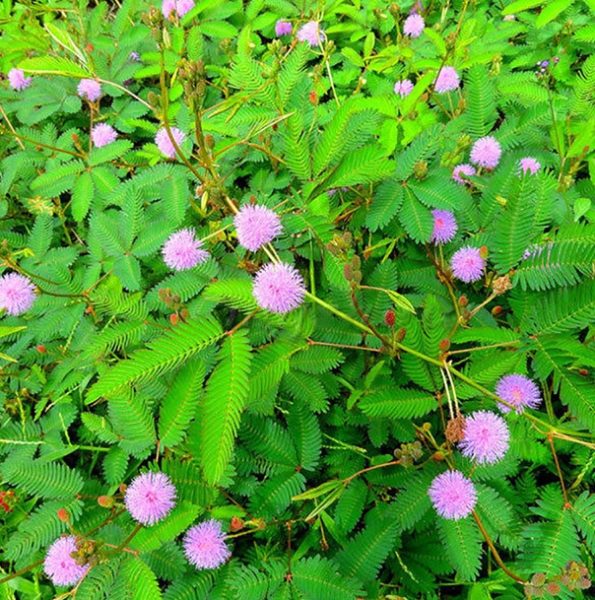 |
Shy
‘));
|
 |
Rough
|
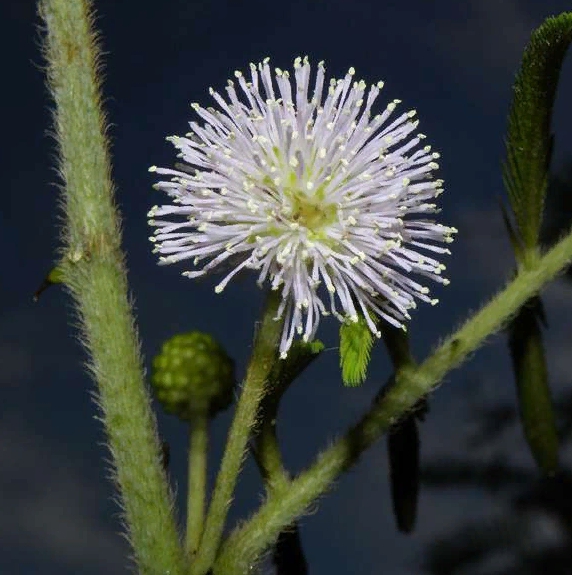 |
Lazy
|
Another representative, a rare species of the legume family, of the mimosa subfamily is water mimosa or Neptunia oleracea. I'll tell you about it separately.
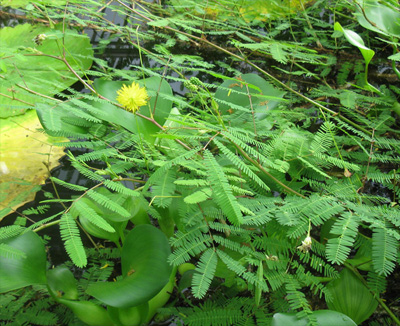 The main area of growth of Neptunia oleracea - Vietnam, Thailand, Indonesia, India
The main area of growth of Neptunia oleracea - Vietnam, Thailand, Indonesia, India
The genus Neptunia includes 8 species of plants, almost all of them grow on earth and only Neptunia orchard grows in water. More precisely, the root and part of the stem of the plant are under water, leaves, flowers and fruits are above water.
Description:
- root - located in the underwater soil;
- stems - up to 4.5 m long, partially hollow, partially filled with a white spongy substance containing air, which allows the plant to remain buoyant;
- leaves - two-pinnate, sensitive to touch;
- flowers - yellow-green, collected in spherical inflorescences;
- blooms - in early summer;
- fruits - leguminous, up to 5 cm long.
 Vegetable neptunia is used as food in Asian cuisine, it is used in medicine. In the photo - Thai salad with young shoots of neptunia garden - yam phak krachet
Vegetable neptunia is used as food in Asian cuisine, it is used in medicine. In the photo - Thai salad with young shoots of neptunia garden - yam phak krachet
The plant is grown at home in large aquariums as a decoration.
But it is often perceived as a malicious and aggressive weed, since neptunia grows very quickly, up to 7 cm per day. Under favorable conditions, the plant begins to cover vast areas of the reservoir. This leads to stagnation of water, the death of some algae and a significant decrease in fish.
How to grow mimosa or silver acacia on your site: features, rules of care and common problems
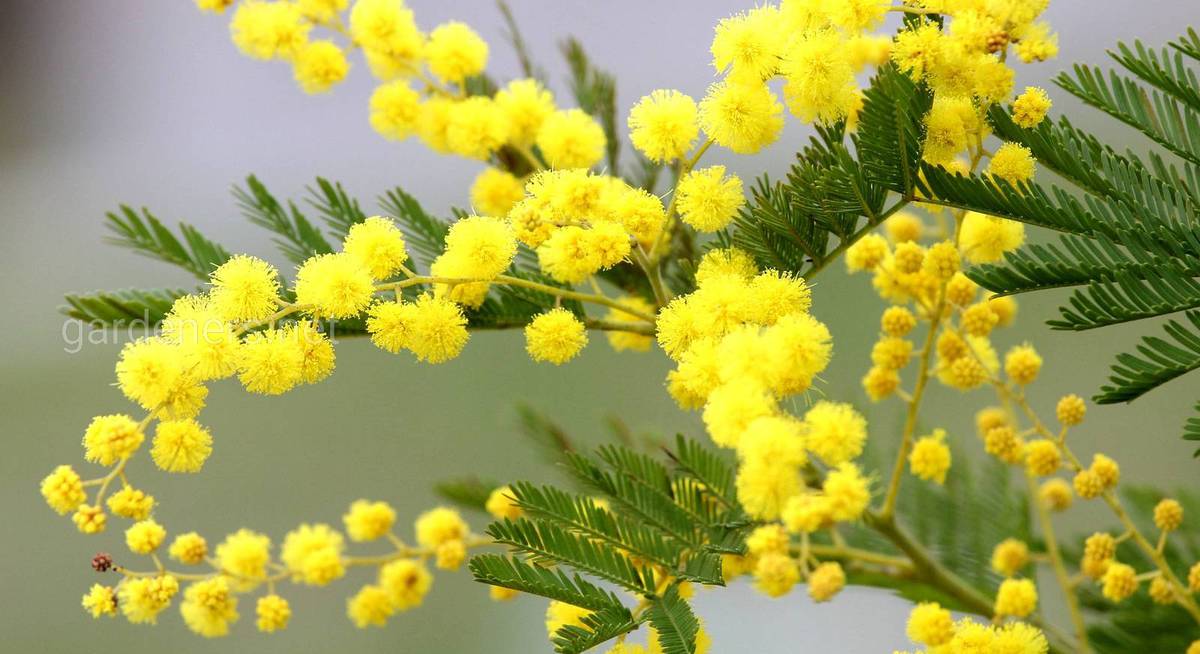
Almost every one of us from childhood knows the silvery twigs, strewn with small, yellow flower balls, which smell nice and symbolize the approach of the women's holiday. These are the associations that mimosa causes - a plant that is offered in retail outlets on the market. Although the plant is not so simple.
In fact, real mimosa, whose homeland is called Australia and Tasmania, successfully grown in South Africa and America, in our climatic zone can only be grown in warm greenhouses. After all, the plant in question grows in open ground only in warm subtropical and tropical countries. And those fragrant branches, familiar and very beautiful, offered by retail outlets in the form of mimosa are not mimosa at all, but its heritage, thanks to breeders, fully acclimatized in our cold and humid climate, retaining the external features of the mother plant of mimosa - Silver Acacia. It is this flowering perennial that is grown on the shores of the Black Sea and the Caucasian coast. From here, cut products are supplied to the flower markets of countries with moderate climatic indicators, where real mimosa does not grow. But the eucalyptus forests of the subtropics, the shores of forest lakes and shallow rivers seem to be sown with bushy and woody plants with fluffy racemose inflorescences.
Care features
A feature of acacia is that it can be grown both outdoors and indoors. The appearance of the plant will surprise any guest in the house. Moreover, such a result can be achieved with a minimum of effort, since acacia is completely unpretentious to care for. To ensure the normal development of a tropical beauty, it is necessary to adhere to the basic rules of its maintenance.
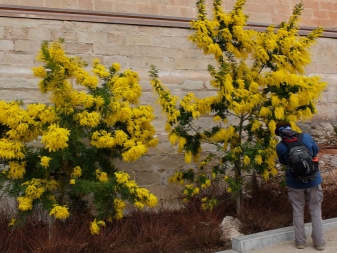
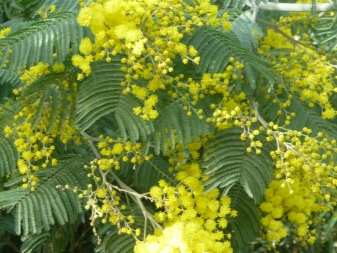
Watering
If you grow acacia outdoors, then watering is necessary only during planting. There is enough rainfall to maintain normal moisture levels.In room conditions, it is necessary to moisten the plant as the soil dries up.
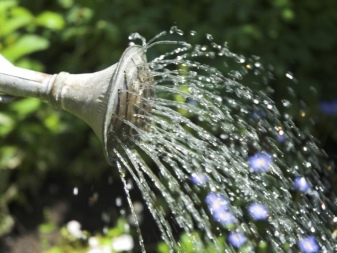
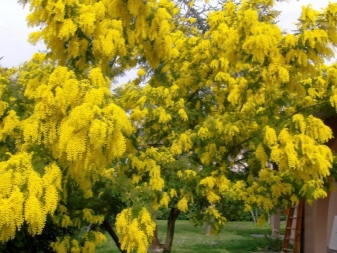
Top dressing
Acacia should be regularly inspected for pests. Usually, if parasites are not found, and the tree has an unhealthy appearance, then the reason may be a lack of nutrients or their excess due to regular feeding. In this matter, the main thing is to maintain a balance, otherwise you can harm the plant. Acacia is fertilized in the spring once every 3 weeks. The same system must be adhered to in the autumn period of the year. In the summer, the tree is fed once a month. In winter, the plant does not need fertilization.
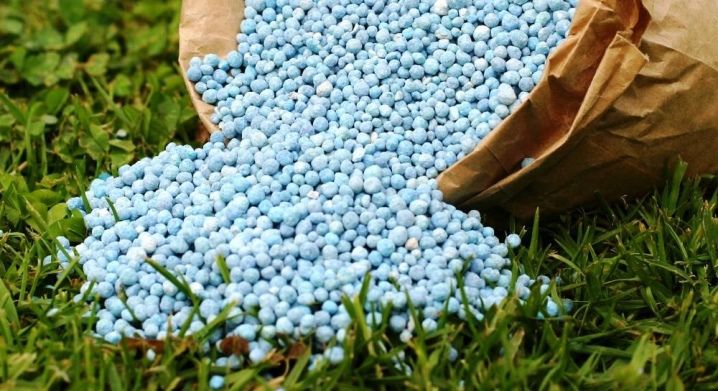
Transfer
Acacia is characterized by a fast growth rate. For this reason, the growing area must be expanded every year. After the end of the flowering period, the tree can be transplanted. This process consists of several stages.
- The soil is watered abundantly with water, after which the plant can be removed, always together with the root.
- Any damaged roots must be removed.
- For a new pot, prepare a substrate consisting of river sand and fertile soil. Humus is often added to this mixture.
- Acacia is planted in the prepared substrate.
- After planting, the plant is well watered.
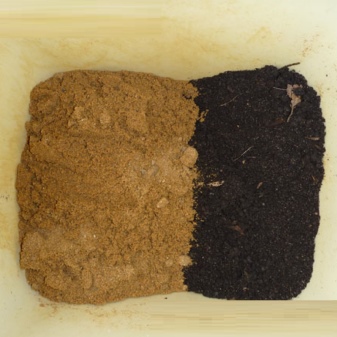

Pruning
In the warm season, a tropical tree grows strongly. The thickening of the crown will have a bad effect on the development of the plant, which can subsequently provoke dangerous diseases. In addition, pruning must be done to maintain the decorative effect of the acacia. After the end of the flowering period, it is recommended to remove weak branches from the plant and shorten the shoots. At the beginning of autumn, it is necessary to perform formative pruning by removing weak shoots.

Different types - different goals
Different types of mimosa plant are used for a wide variety of purposes: as decorative elements, protective fences, soil controllers, for making perfumes, and so on. It can be found all over the world: in Australia, Africa and Europe, America. The main features are the type of soil: rather poor or even dry soil, as well as rocky areas, because the mimosa tree does not tolerate excessive moisture.
One of the varieties is the silver acacia (Acacia Dealbata), a large and very robust tree with dark green foliage. Abundant yellow bloom appears mainly in late January - March. Basic color mimosa flowers light yellow, one of the most commonly used in the field of symbolism. With a delicate aroma, this plant radiates and quite naturally represents the sun. Mimosa yellow is also a reunion flower. In the language of flowers, it means secret love, security, increased sensitivity.

Watering
WITH early spring to late autumn, it is necessary to keep the soil moist constantly. That is, watering is required very plentiful. Water is preliminarily taken into a container and left for several days. Hard and cold water is absolutely not suitable. When mimosa blooms, the soil should not be allowed to dry out. Once the top two centimeters are slightly dry, the substrate needs to be moistened. In winter, you can water much less.
In addition, mimosa does not like dry air very much. At the same time, spraying the leaves is not suitable because they are too sensitive. An excellent way out of this situation is to purchase a humidifier. Wet expanded clay or pebbles perfectly save the situation. To do this, take a small tray, lay out the pebbles and place the pot on top. It is enough to add a small amount of water to it, and the plant is provided with an optimal level of moisture.
Conclusion

Mimosa is a very beautiful and delicate shrub that delights with its elegant appearance. It is worth touching its leaves at least once in your life to see how they begin to curl up.However, it will be very difficult to grow it in Russia, especially in the northern regions, since the plant is considered tropical and requires appropriate conditions for normal growth, such as good sun, moist air and nutritious soil. But if you manage to grow it, then mimosa will delight you for a long time with funny flower balls that form interesting panicles.

